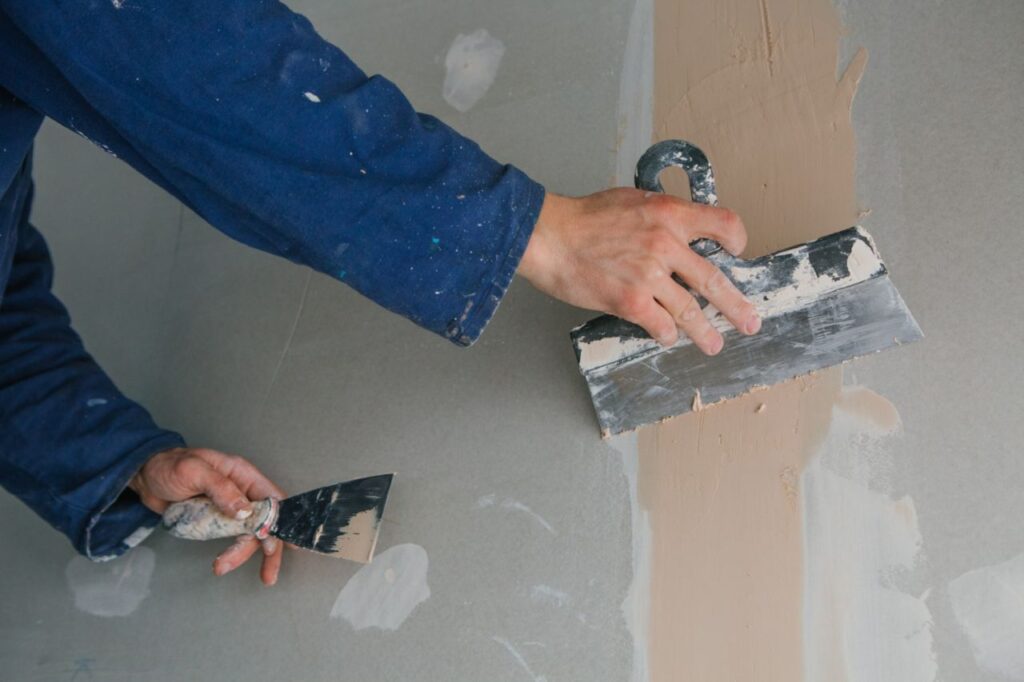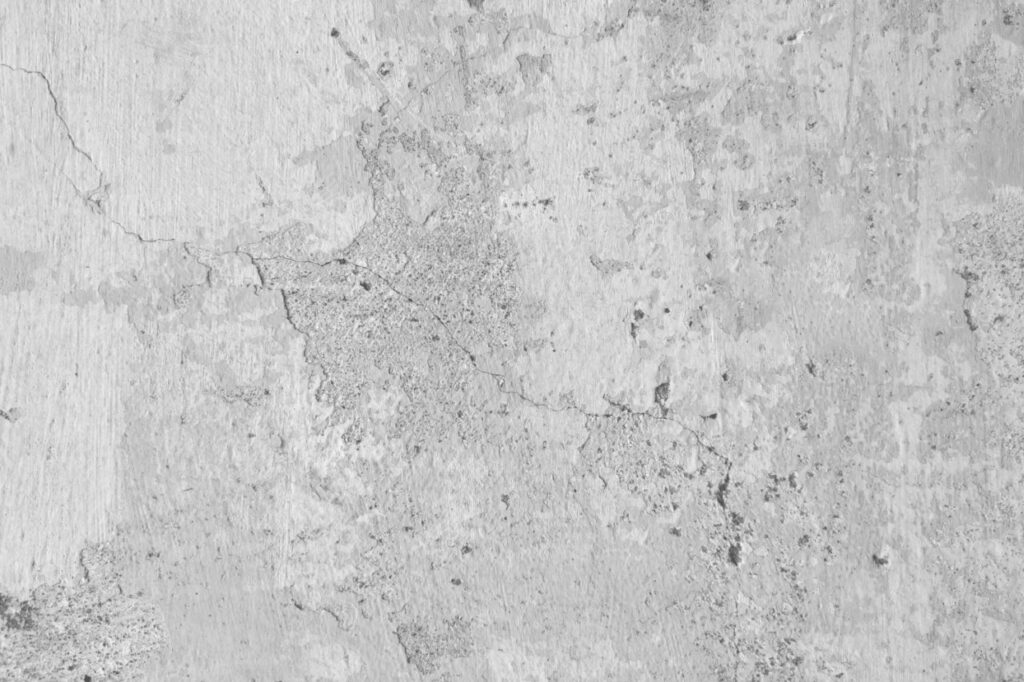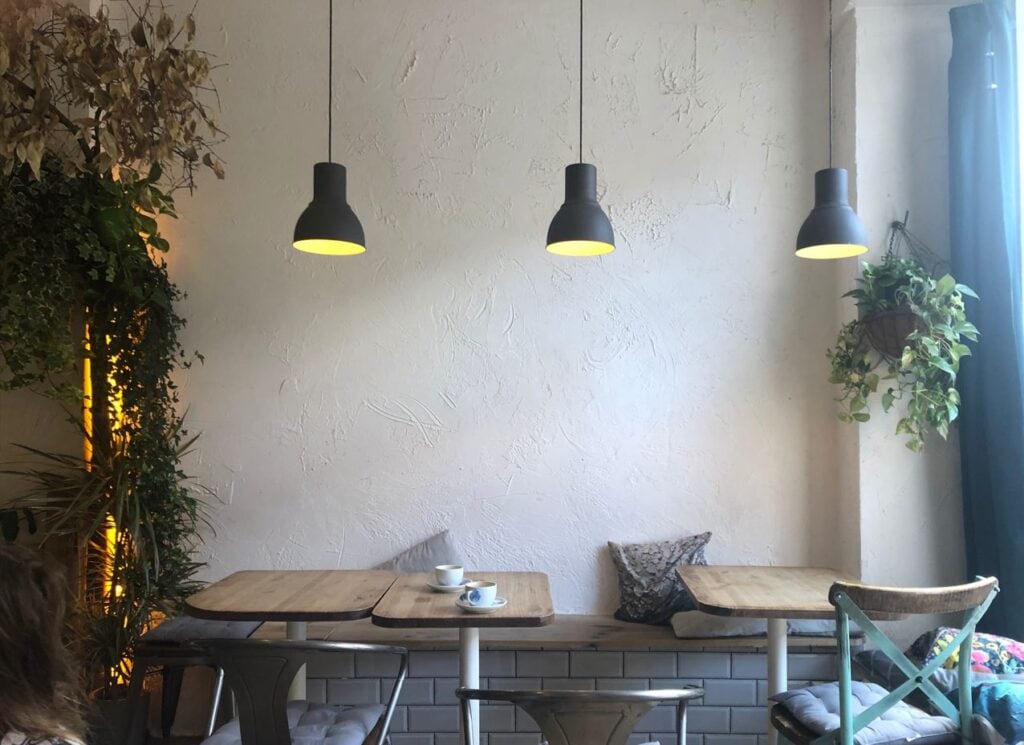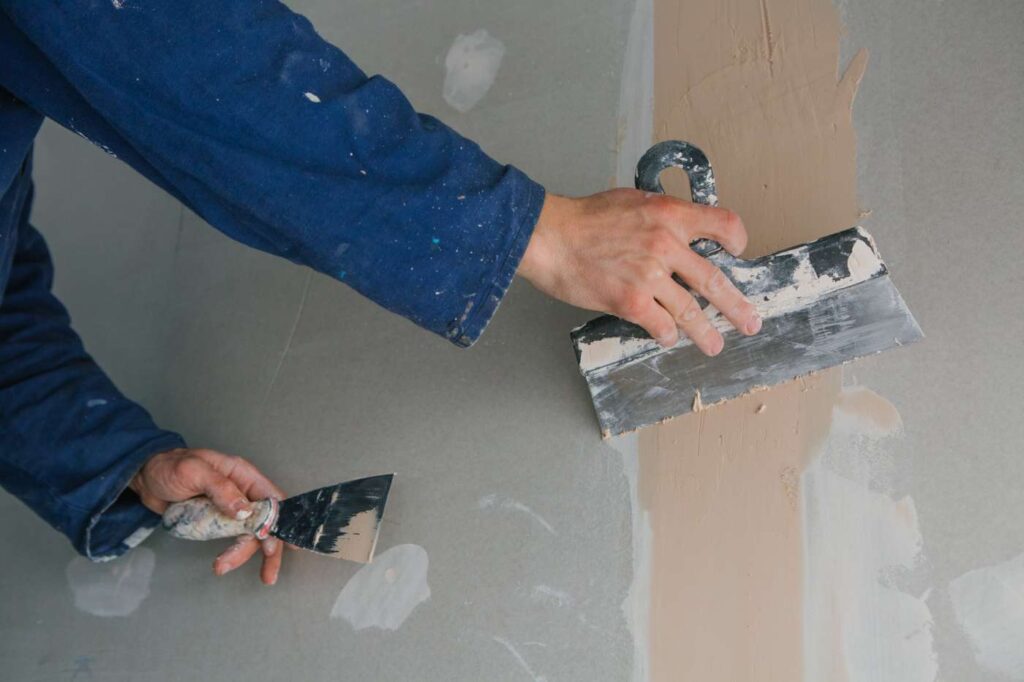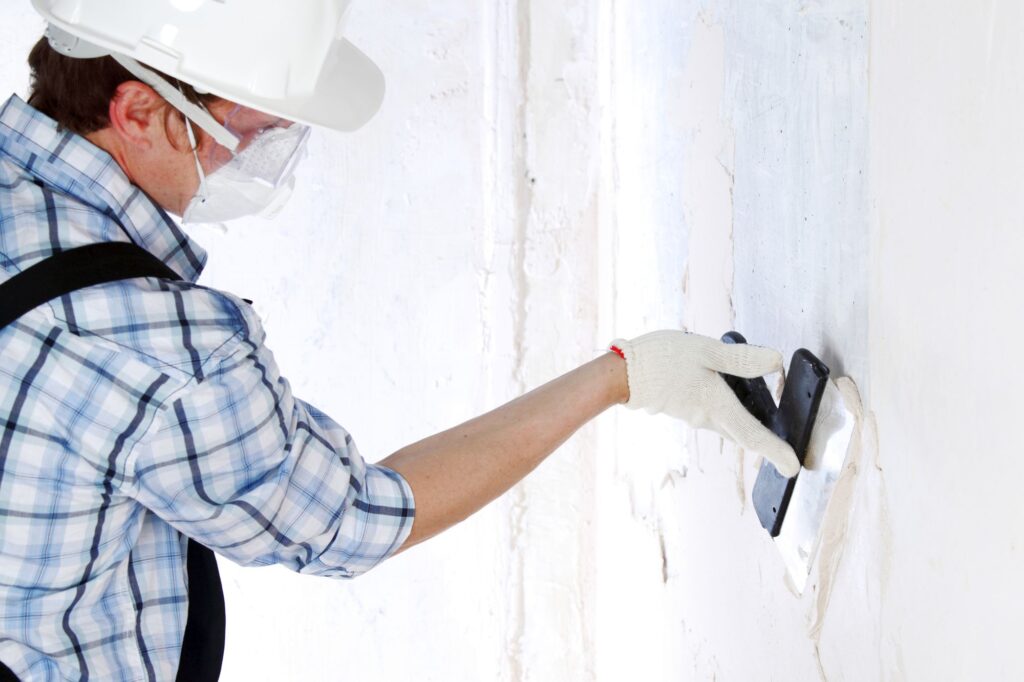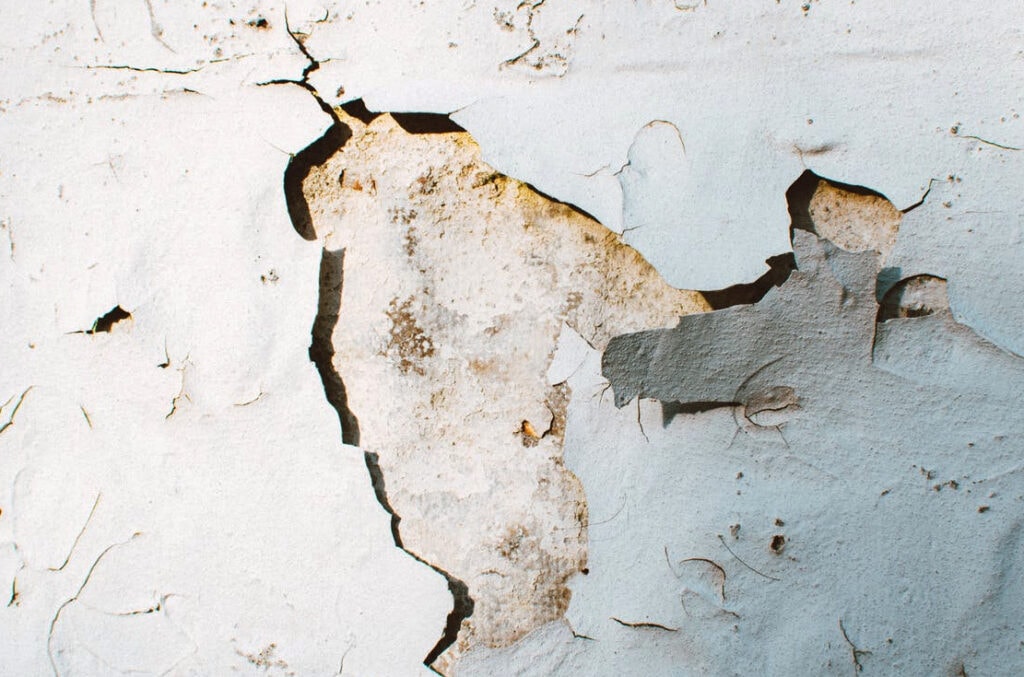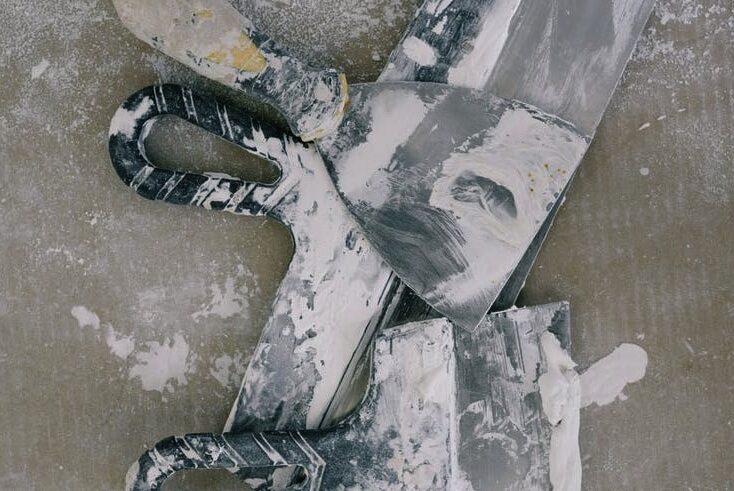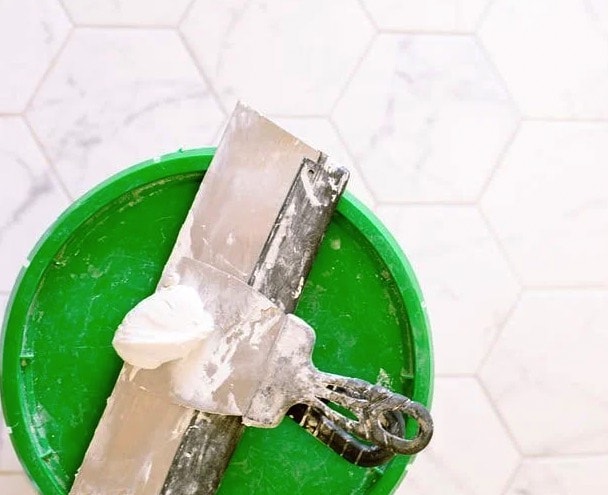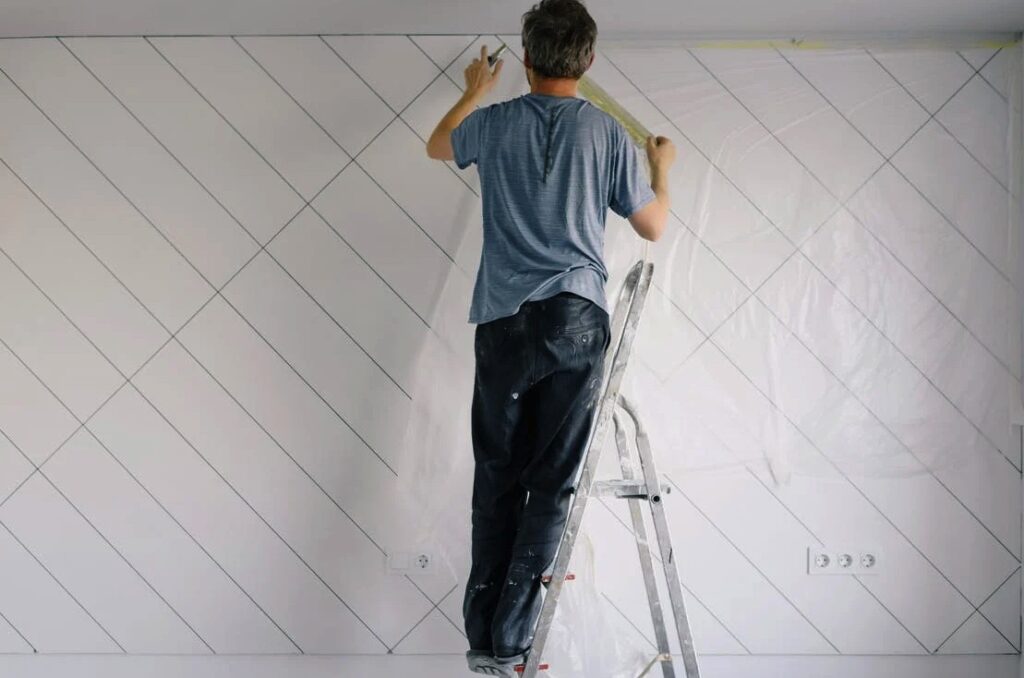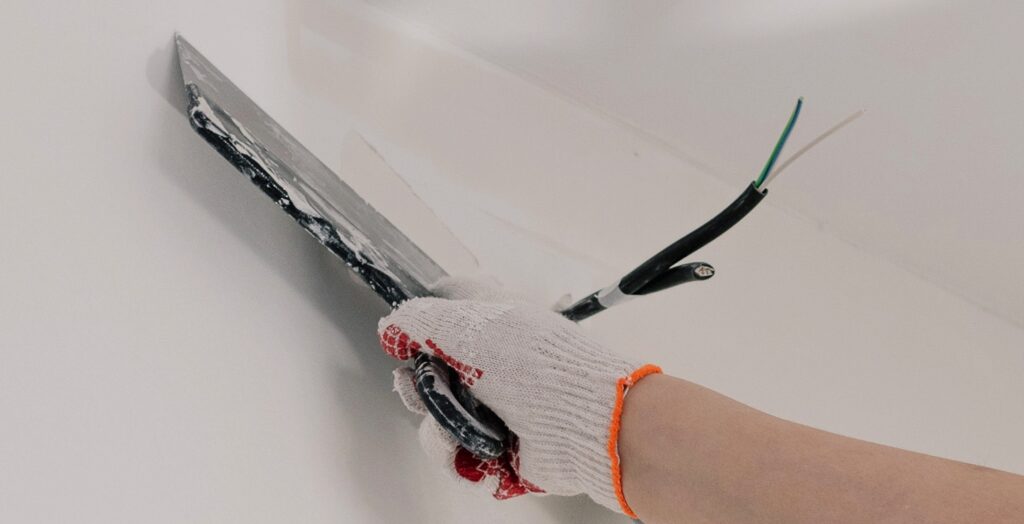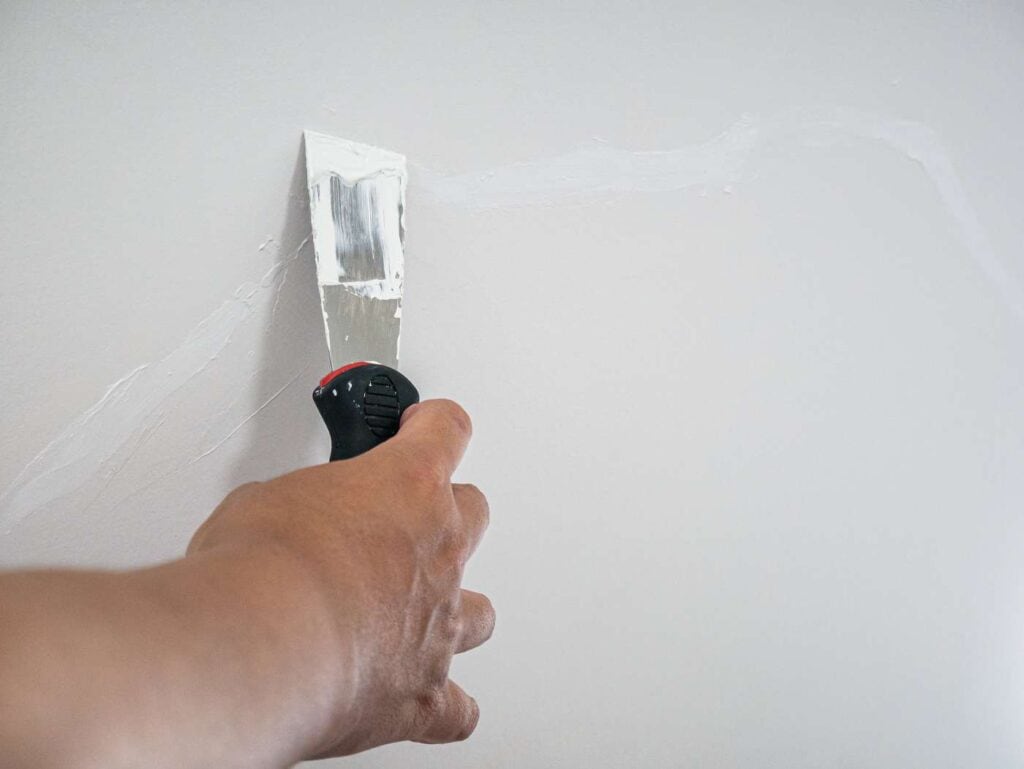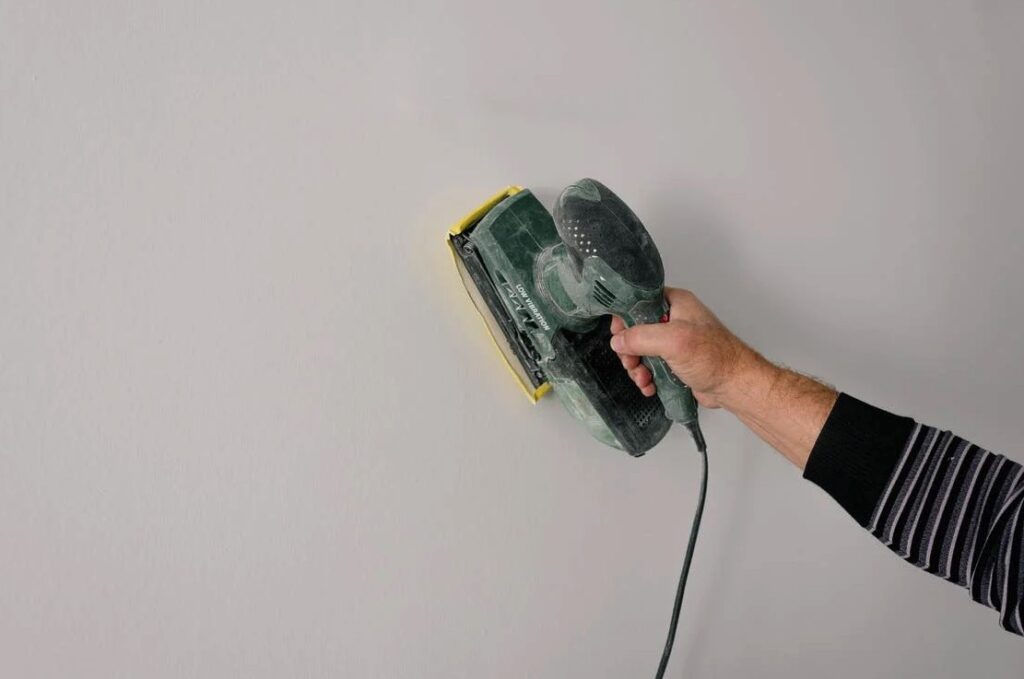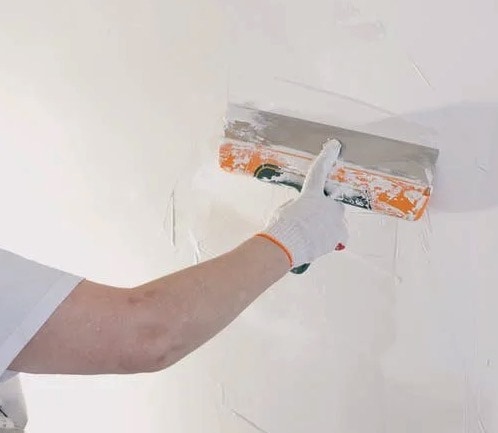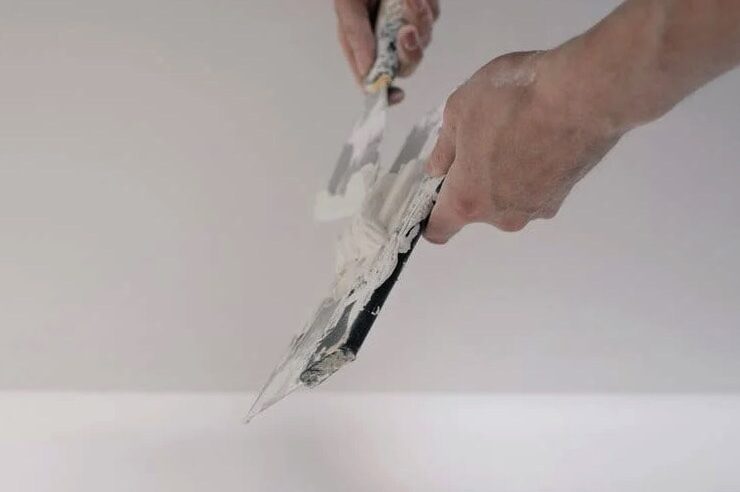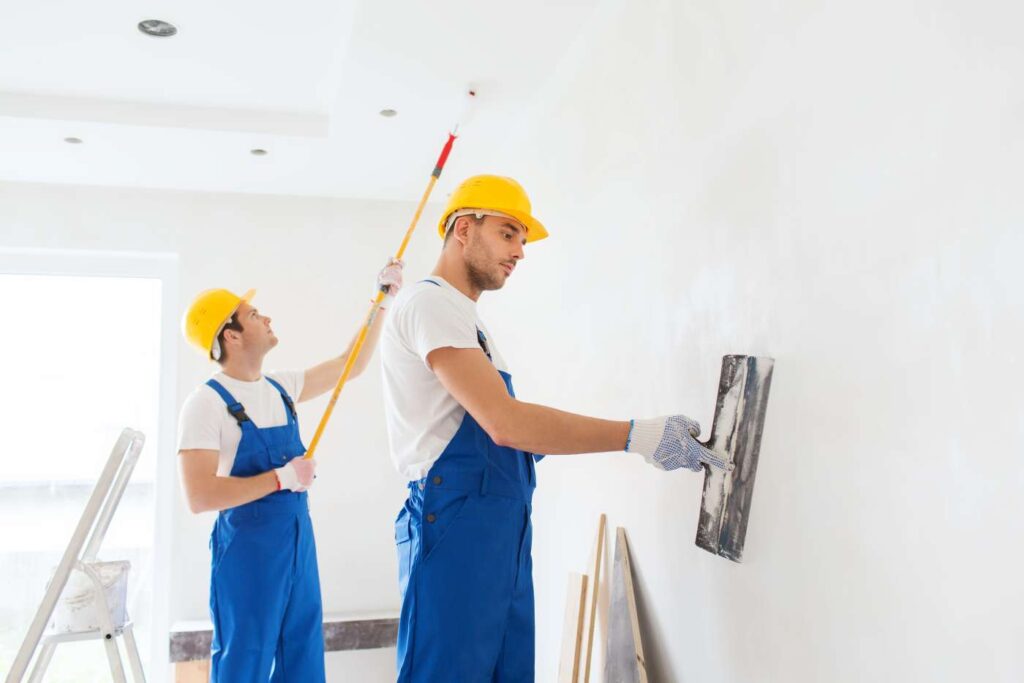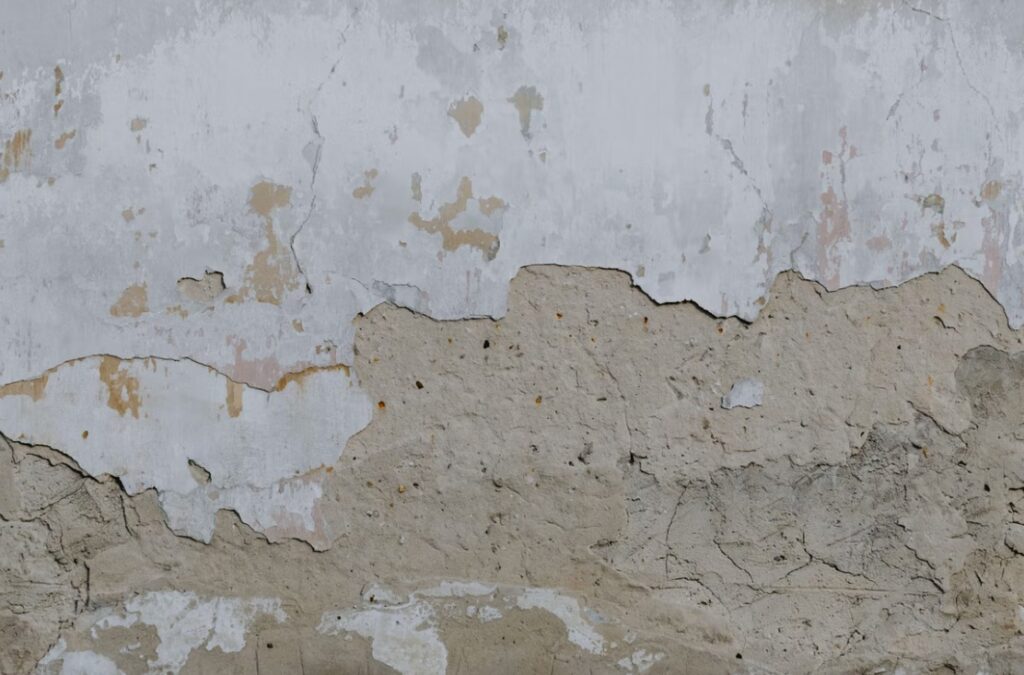Hiring a good plasterer is essential to ensure that your plastering project is completed to a high standard. One of the first steps in hiring a good plasterer is to research and gather recommendations from friends, family, or online reviews. Look for plasterers who have a good reputation for quality workmanship and reliability. Once you have a list of potential plasterers, contact them to discuss your project and request a quote. It's important to get quotes from multiple plasterers to compare prices and services.
When hiring a plasterer, it's also important to check their credentials and qualifications. Look for plasterers who are licensed and insured, as this ensures that they have met certain standards and have the necessary skills and knowledge to complete your project safely and effectively. Additionally, ask for references from previous clients and follow up with them to get feedback on the plasterer's work. This can give you a better idea of the plasterer's reliability and the quality of their work.
Another important factor to consider when hiring a plasterer is their experience and expertise. Look for plasterers who have experience with the type of plastering work you need done and who have a portfolio of previous projects you can review. Additionally, consider the plasterer's communication skills and professionalism. A good plasterer should be able to communicate clearly and effectively with you throughout the project and should be professional in their demeanor and approach. By taking the time to research and hire a good plasterer, you can ensure that your plastering project is completed to your satisfaction.
What is Plastering
Plastering is the practice of covering surfaces with a thin layer of plaster to make them look smooth and consistent. It is a standard method for improving a building's aesthetics, security, and longevity in the construction sector.
Plastering covers a surface with a mixture of aggregates, water, and binding agents. The plaster mix is applied uniformly using various equipment and techniques to obtain the required thickness and texture.
Plastering's main objective is to create a visually pleasing surface by covering up flaws in the underlying structure. It gives a structure its final, refined appearance by serving as the finishing touch.
There are several practical advantages to plastering as well. As a protective barrier, it prevents sound, moisture, and temperature fluctuations from penetrating walls and ceilings. Plastering can improve a building's insulation, lowering energy consumption and increasing comfort levels by forming a solid barrier.
Plastering supplies have developed and improved throughout the years. Plasters made of lime were popular because of their flexibility and breathability. However, gypsum plasters have become more common in contemporary buildings because of how easily they are applied and how quickly they dry.
Plastering can be customised to match various needs and tastes. Surfaces can be made to look smooth and sleek, or they might have rough patterns or elaborate motifs applied, depending on the finish chosen.
Note that rendering differs from plastering; the two are complementary building techniques. Although both apply a mixture onto surfaces, rendering is more commonly used on exterior surfaces like facades and external walls, and plastering is more commonly used on internal surfaces like walls and ceilings.
As a last phase in the construction process, plastering entails laying a layer of plaster onto surfaces. Buildings with this finish have better insulation and last longer, not to mention look better. It also protects the building and makes it more functional. Plastering is essential in constructing aesthetically pleasing and structurally sound buildings due to its adaptability and variety of finishes.
Types of Plastering Materials
Various plastering materials can be utilised depending on the surface, the desired finish, and the surrounding conditions. There are distinct advantages and qualities to each material. Let's have a look at a few plastering materials that are often used:
Lime-Based Plaster
Lime plaster's pliability and breathability have made it a popular choice for millennia. A combination of sand, lime, and water makes it. When it comes to historical buildings or constructions that demand a more classic look, lime plaster is a great choice because of its longevity. It can soak up water and let it evaporate, so condensation can't form.
Gypsum Plaster
One common material in contemporary buildings is gypsum plaster, sometimes called plaster of Paris. Gypsum is a naturally occurring mineral heated to eliminate its water content; this is how it is manufactured. Construction projects with tight schedules can benefit from gypsum plaster because it dries quickly. Used extensively on indoor surfaces, it imparts a flat, white sheen.
Cement-Based Plaster
The three main ingredients in cement plaster are water, sand, and cement. Its adhesive qualities, strength, and longevity have brought it great acclaim. The durability and resistance to weathering of cement plaster make it an ideal material for use on outdoor surfaces. This finish is perfect for places that need extra protection because it is robust and solid.
Acrylic-Based Plaster
Because of their adaptability and simplicity, plasters made of acrylic have become increasingly popular. These plasters are used to combine aggregates, acrylic polymers, and other ingredients. Plasters made of acrylic are quite durable, won't chip or peel, and won't absorb water easily. They are ideal for customised and ornamental finishes because to their variety of hues and textures.
Clay Plaster
The sustainability and health advantages of clay plaster have made it a popular choice among eco-conscious consumers. A combination of clay, sand, and organic fibres is made. Clay plaster is great for respiratory health because it is porous and controls the relative humidity in a room. It works well for both modern interiors and those restoring older structures.
Depending on the needs of the project, pick the appropriate plastering material. Several factors must be considered, including the intended finish, surface preparation, ambient factors, and budget. The best plastering material for your building needs can be better determined with the guidance of an expert.
Signs Of A Good Plasterer & High-Quality Plastering Work
- It would help if you looked for trowel marks and rough spots when walling. A skilled decorator will smooth out any imperfections in the wall before painting over them to ensure they look perfect.
- Be wary of the finishes that are applied. The difference between a flat, rundown plaster wall and a wonderfully completed, smooth surface is often the finishing touches.
- Make sure there aren't any major cracks or crazing in the walls.
- Look for cracks in the wall or ceiling around the joints. The implication would be that these joints were not taped correctly. It indicates low-quality plastering if the plasterers have utilised tapes made of paper.
- You can feel the smoothness of newly applied, unadorned plaster by running your fingers over it. If the plastering job is done well, the surface will be smoother.
Advice for Finding a Reliable Plasterer
Listed below are a few suggestions for locating a reliable plasterer.
Get Recommendations From Family And Friends
Reach out to your network instead of spending hours on the phone to locate a plasterer. Get recommendations from people you know who have used a plasterer before. Ask them questions such as, "What kind of plasterer did you use?" and "Were you satisfied with their work?" to get helpful information.
Post Your Requirement On Local Community Groups
To begin your search for a reliable plasterer, ask people you know for recommendations. Look online if they don't have any recommendations; just read reviews and look at their social media following before committing.
You can find reliable contractors to assist you with home renovations by searching local online community groups. To find the top plasterers in your region, you must place a request on the site.
Members of particular communities can create Facebook groups to ask enquiries and provide product and service feedback. Find local plasterers by searching for your region and asking for recommendations.
Learn Some Basics On Plastering
Knowing the fundamentals of an expert's work and what you require from them makes dealing with them much easier, regardless of the task. Get a head start when you contact local plasterers by researching the project you're asking them to complete.
Find Out How The Job Is Carried Out
Talk to the plasterer you're considering hiring about the best ways to prepare for the job and how they plan to accomplish the outcomes you want. This will help you choose a reliable professional. Before hiring a plasterer, ask them about their process, goals, and the tools they'll employ.
Choose A Plasterer With Years Of Experience
The expertise of the plasterers, who may hold degrees in the field, is crucial to the quality of the finished product. Experience, the nature of the work, and the availability of all materials and tools distinguish a professional from an amateur.
Verifying the plasterer's experience level should be your top priority when hiring them. They will be more likely to finish your project on schedule and to your satisfaction if they have more experience.
Check Plasterer Reviews And Ratings
A great place to start when looking for a plasterer expert is by reading testimonials from other satisfied customers. You can learn about the competence and professionalism of the top local home services by reading these evaluations.
Request A Free Plastering Quote
Requesting numerous estimates will allow you to compare different price alternatives, which is essential if you want to employ a good plasterer in your neighbourhood. Experience, skill level, and general quality of work should be considered alongside pricing. To make a well-informed hiring selection, it is recommended that you get numerous quotations from various tradespeople.
FAQs About Plastering
Inquire about their experience, specialisation, job completion process, materials used, estimated timeline, and any potential additional expenses.
Yes, obtaining quotes from multiple plasterers allows you to compare prices and assess the value offered by each contractor.
Address concerns with the plasterer directly and attempt to resolve the issues amicably. Refer to the terms outlined in the contract if necessary.
Look for plasterers who are members of recognised industry associations or organisations, as membership may indicate a commitment to high standards and professionalism.
Look for a plasterer who communicates effectively, listens to your concerns, is reliable and punctual, and is transparent about the project timeline and potential challenges.
Plastering Common Errors
Blistering Of Plastered Surface
When tiny areas are compressed beyond the plastered surface's plane, blistering of the surface occurs. The plastered surfaces within the structure show signs of blistering.
Cracks In Plastering
The plastered surface begins to crack. Hairline cracks and larger cracks are both discovered. In contrast to the more noticeable cracks, the hairline cracks are difficult to spot. "Crazing" describes the process by which tiny fissures appear.
Plaster can crack due to thermal motions, surface discontinuity, structural faults, poor artistry, excessive shrinkage, etc.
Efflorescence On Plastered Surface
When soluble salts are present in the ingredients used to make plaster or in construction materials such as sand, cement, bricks, etc., efflorescence will develop on the plaster. Soluble salts may be present in even the water used for building.
The soluble salts are brought to the surface of a freshly constructed wall when it dries out, and they appear as a white crystalline substance. This development is called efflorescence, which hurts the paint's ability to stick to the wall.
A little efflorescence can be removed by dry-bushing and frequent cleaning, but it still leaves an unsightly appearance.
Flaking
The most common cause of flaking, which is the formation of a little loose mass on the plastered surface, is the bond breakdown between successive plaster layers.
Peeling
When plaster peels, it separates from the surface and forms a patch in that area. The most common cause of plaster peeling is a breakdown in the binding between coatings.
Popping
In some cases, the plaster mix contains particles that swell as they set. The particle is positioned before a conical hole cut into the plastered surface. This spherical opening is called a blow or a pop.
Irregular Plaster Surface
An inadequate plastering job causes surface irregularities to become visible.
The Softness Of The Plaster
Particular areas of the plastered surface become pliable due to the exceptionally high moisture levels. The presence of deliquescent salts, excessive suction from the undercoats, excessively thin finishing coats, etc., are the main causes of the softness.
Rust Stains On Plastered Surface
If the plaster is applied over metal lath, rust streaks may appear on the plastered surface.
Conclusion
Putting down a thin layer of plaster on a surface to make it look smooth and even is called plastering. In the construction industry, it is necessary to make a building look better, keep it safe, and last longer. Over time, plastering materials have changed. Lime plaster is still popular because it is flexible and airy. Gypsum plaster, which is also called "plaster of Paris," is more popular in modern buildings because it can be put up quickly and doesn't take long to dry.
Different plastering materials can be used on different surfaces, based on the finish that is wanted and the conditions of the area. People like lime-based plaster because it is flexible and lets air pass through it. On the other hand, gypsum plaster is often used in modern buildings because it dries quickly. Plaster made from cement lasts a long time and doesn't fade in the weather, so it's perfect for use outside. Plasters made from acrylic last a long time, are simple to use, and can be customised to fit your needs. Clay plaster is famous because it lasts a long time and is good for your health. It can be used in both new and old buildings.
To find a good plasterer, you should think about things like the finish you want, how to prepare the surface, the environment, and your budget. Before painting, a skilled painter will smooth out any flaws. The finishing touches can make or break the whole project. If there are cracks around the joints, the plastering isn't very good. You can feel a smooth surface when you run your fingers over new plaster.
When small areas are pushed past the plane of the glued surface, blistering happens. Plaster can crack when it is subject to changes in temperature, uneven surfaces, structural flaws, bad craftsmanship, or too much shrinkage. Efflorescence on the plastered surface is caused by salts that dissolve in the plaster or building materials. Flaking happens when the clay comes away from the surface because the bond between the layers has broken.
When a conical hole is cut into the poured surface, the plaster mix particles swell up and pop. Surface flaws can be seen if the plastering isn't done right. High amounts of moisture can make parts of the plastered surface bend.
To sum up, to find a trustworthy plasterer, you should ask for suggestions, do research on the job, read reviews, and get several quotes.
Content Summary
- Hiring a good plasterer involves understanding the basics of plastering to assess their work effectively.
- Plastering enhances a building's aesthetics, security, and longevity by covering surfaces with a thin plaster layer.
- It requires a mix of aggregates, water, and binding agents applied uniformly for the desired texture.
- The goal of plastering is to create a visually pleasing surface, covering up structural flaws.
- Plastering acts as a protective barrier, improving insulation and comfort levels in a building.
- Over the years, plastering materials have evolved, with lime and gypsum plasters being popular choices.
- Rendering, although similar to plastering, is typically used on exterior surfaces.
- Different plastering materials offer various advantages, suitable for specific needs and conditions.
- Lime-based plaster is valued for its flexibility and breathability, making it ideal for historical buildings.
- Gypsum plaster, known for its quick drying time, is widely used in modern construction for indoor surfaces.
- Cement-based plaster is known for its durability and is often used on exterior surfaces for extra protection.
- Acrylic-based plasters offer versatility and are suitable for decorative finishes.
- Clay plaster is favoured for its environmental and health benefits, including regulating room humidity.
- A good plasterer will ensure a smooth finish with no trowel marks or rough spots.
- The quality of finishing touches distinguishes between mediocre and high-quality plastering work.
- Be cautious of significant cracks or crazing, indicating poor plastering.
- Cracks around wall or ceiling joints suggest improper taping, a sign of low-quality work.
- smoothness of the plaster can be checked by running the back of your hand over the surface.
- Getting recommendations from friends and family is a reliable way to find a good plasterer.
- Local online community groups can also be a valuable resource for finding recommended plasterers.
- Understanding the basics of plastering can help in communicating effectively with tradespeople.
- Discuss their process with potential plasterers and how they plan to achieve the desired outcomes.
- Experience is crucial; choose a plasterer with a proven track record in the type of project you have.
- Reading reviews and ratings can provide insights into a plasterer's reliability and quality of work.
- Requesting multiple quotes allows for comparison and ensures competitive pricing.
- Common plastering errors include blistering, cracking, efflorescence, flaking, and peeling.
- Efflorescence occurs due to soluble salts in the materials, affecting paint adhesion.
- Flaking and peeling are caused by a breakdown in the bond between plaster layers.
- Popping is caused by particles in the plaster mix that swell and form holes on the surface.
- An irregular plaster surface indicates inadequate plastering work.
- Softness in plaster can be due to high moisture levels or excessively thin finishing coats.
- Rust stains on plastered surfaces may appear if plaster is applied over metal lath.
- Knowing these common errors can help in assessing the quality of a plasterer's work.
- A reliable plasterer will be transparent about their methods and expected results.
- The choice of plastering material should be based on the project's specific needs and conditions.
- A well-executed plastering job enhances the building's overall appearance and functionality.
- Plastering is a skill that requires precision, experience, and attention to detail.
- Ensure the plasterer uses the appropriate material and techniques for your project.
- A professional plasterer should be able to handle various plastering tasks and challenges.
- Discuss any potential issues, such as moisture or structural flaws, with the plasterer beforehand.
- A good plasterer will take the time to prepare surfaces properly before applying plaster.
- Check the plasterer's portfolio or previous work to assess their skill level.
- Ensure the plasterer is familiar with local building codes and regulations.
- A detailed quote should include all costs associated with the plastering project.
- Consider the plasterer's availability and whether they can meet your project's timeline.
- Ask the plasterer about their cleanup process and disposal of materials.
- Communication is key; ensure the plasterer understands your expectations.
- A reputable plasterer will offer a warranty or guarantee on their work.
- Price should not be the only factor in choosing a plasterer; consider the value of quality work.
- Hiring a good plasterer is an investment in your property's aesthetics, durability, and overall value.
